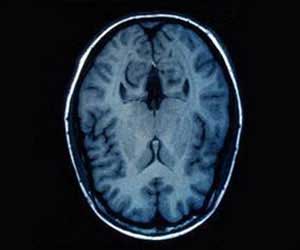Tiny micro-vesicle structures carry tell-tale proteins that may help to predict the likelihood of mild cognitive impairment developing into Alzheimer's disease.

‘Tiny micro-vesicle structures used by neurons and other cells to transport materials internally or dispose of them externally carry tell-tale proteins that may help to predict the likelihood of mild cognitive impairment developing into full-blown Alzheimer's disease.’





Researchers at University of California San Diego School of Medicine say tiny micro-vesicle structures used by neurons and other cells to transport materials internally or dispose of them externally carry tell-tale proteins that may help to predict the likelihood of mild cognitive impairment developing into full-blown Alzheimer's disease. The findings, published online in the journal Alzheimer's & Dementia, represent a quicker and less invasive way to identify impending cognitive decline and begin treatment before progression to established, irreversible dementia.
Senior author Robert A. Rissman, associate professor in the Department of Neurosciences at UC San Diego School of Medicine, director of the Biomarker Core for the Alzheimer's Disease Cooperative Study (ADCS) and director of the Neuropathology Core and Brain Bank for the UC San Diego Shiley-Marcos Alzheimer's Disease Research Center, said, "Clinical trials of treatments for established AD have thus far failed. That has prompted great interest in pinpointing underlying biomarkers that can predict the conversion from MCI to AD dementia. Finding such biomarkers would also identify persons most likely to be responsive to preventive treatments."
Currently, the accepted methods for diagnosing preclinical AD patients is to detect protein biomarkers found in cerebrospinal fluid (CSF), in combination with advanced neuroimaging and neuropsychological testing. But CSF sampling involves an invasive, often painful, process. Neuroimaging is expensive. Neuropsychological testing is time-consuming and can often vary from visit to visit.
The new method described in the Alzheimer's & Dementia study evaluated the potential of exosomes - extremely small vesicles or sacs found in most cell types, including neurons. Exosomes are thought to move materials inside cells and are used to dump cellular trash into the bloodstream for disposal. In the case of disease, Rissman's group predicted that neuronal derived exosomes (NDEs) would carry damaged or excess proteins and metabolites out of brain cells, among them amyloid and tau biomarker proteins that are strongly associated with AD.
Advertisement
After characterizing NDEs by size, shape and concentration, the researchers compared that data with the different patient cohorts. They found that NDEs carried targeted biomarker proteins, which have previously been found to predict development of AD up to 10 years before onset of clinical symptoms, and correctly distinguished 100% of patients with AD from normal cohorts.
Advertisement
The development of blood-based biomarkers for AD (and other neurodegenerative diseases) diagnostics could significantly improve the effectiveness and reliability of patient care and future research, said the authors, who encouraged further studies to refine and validate the approach.
Source-Eurekalert












